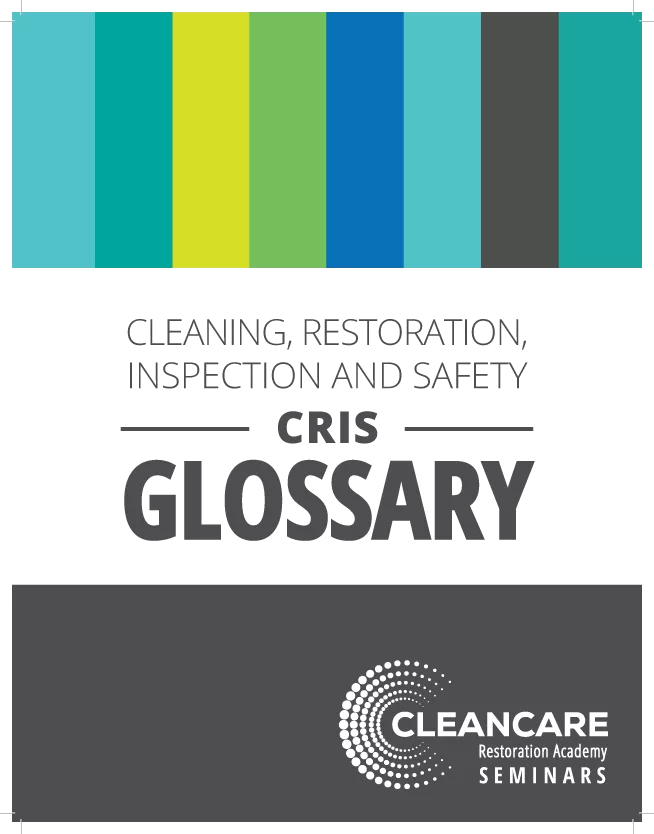The Growing Popularity of Botanical Antimicrobials
The rising demand for ingredients from natural plants, not a chemical plant
There are many choices of antimicrobials on the market but one type that has risen to popularity in recent years: botanical products. While they offer many distinct advantages over traditional synthetic chemistries such as unprecedented safety profiles, they are also a sustainable cleaning option for every restoration job.
Asking if a product is green or not, is really not enough anymore. The question has shifted to ask if the product is a sustainable choice or not. The term sustainability comes from the process of looking at the total life cycle of a product. From beginning to end, what are the environmental and human health impacts of that product? Gone are the days when manufacturers could switch out a few toxic ingredients and then market them as “green.” Restoration contractors have come to look for botanical ingredients in the products they use because the ingredients come from a natural plant and not a chemical plant.
What is a Botanical Antimicrobial?
Botanical antimicrobials are known as that because they use actual plant (or botanical) ingredients from nature. There is a holistic approach to formulating with natural ingredients to mimic and harness what nature has done for centuries. There is always a balance in nature. For harmful bacteria and viruses, nature has given a powerful immune system to plants that withstands invading germs. Thyme plants are one of the hardiest plants in the world, which makes their essential oil nature’s best antimicrobial.
Green Washing
Unfortunately, using completely natural ingredients is an unusual concept for the chemical industry to understand. Chemists have always tried to make cheaper synthetic copies of what nature has designed and expect the same results. Doctors are finding this doesn’t work with the advent of super bugs, which can build resistance to synthetic chemistry easily.
Some chemicals market themselves as botanically-derived or nature-inspired, but that is just the new generation of green washing. They can’t be botanical unless it’s actually from a plant. Otherwise, it’s a man-made copy. That’s like saying Tang is the same as real orange juice. Simply adding natural essential oil to an existing synthetically - based product doesn’t make it botanical either.
In our industry, even Xactimate recognizes the potential for green washing and specifically identifies that only plant-based antimicrobials can use the green product code WTR-GRMB. By using this code, restorers are compensated for using a botanical product over a synthetic one, which is more beneficial for everyone.
So how do you know what is authentically botanical? Take a close look at the ingredients and the safety data sheets.
A Revolution to the Chemical Industry
Antimicrobials were traditionally always assumed to be toxic to humans as well as the organisms they were intended to kill. Botanicals revolutionized the antimicrobial world by producing the very first disinfectant approved by the Environmental Protection Agency (EPA) that did not require any human health warnings on the label. That was a first!
Unlike synthetic chemistries, botanicals use thyme oil as the active ingredient which doesn’t affect humans. It’s deadly to microorganisms, but it’s part of the human diet and regularly found as a spice in food, such as spaghetti sauce or salad dressings. Without the human health issues as a concern, the EPA didn’t require the use of PPE when applying a botanical antimicrobial either. They also didn’t require it to be rinsed off a surface after application… another first!
When botanical antimicrobials first hit the market they were lumped in with all the other “green” products and people easily dismissed them thinking they didn’t work as well. When in fact, in order for a product to make a public health claim (like “kills germs”), the product must be registered with the EPA. The truth was, however, that botanicals went through all the same standardized testing and passed with flying colors. That is the EPA’s way of telling the public that the product did, in fact, do what it says it’s going to do.
Optimized Dynamic Chemistry
Botanical chemistry isn’t just for antimicrobials, though. Botanical cleaners have also come a long way. The best cleaners are formulated to attack dirt in a much more efficient way than traditional chemicals.
Where most cleaners use one method of dealing with dirt, bio-surfactants are formulated with a process called Optimized Dynamic Chemistry (ODC) to create multiple reactions at the same time. The result is a systematic approach to dissolve, disperse, and encapsulate dirt.
This formulation difference produces high performance cleaners that are more effective, safer to use and much more sustainable for the environment than typical synthetic cleaners. Sound way too technical for you? Think of it like an elite Special Forces team as opposed to a napalm bomb. Traditional synthetic chemistry is the bomb that obliterates everything, where as the tactical team is made up of soldiers trained to do their specialized job and seek out and destroy only the target.
Optimized dynamic chemistry is like the Special Forces team, with lots of soldiers doing very specific functions to accomplish the goal without all the collateral damage. It’s a revolutionary, much safer approach to cleaning chemistry!
Less Liability
With traditional synthetic chemicals that have health warnings listed on their label, there is a risk for the restorer applying them into someone’s home or commercial building. By using botanical technologies, with no health warnings, we take out the health and safety concerns and the restorer avoids that liability from something going wrong. Less liability is a win-win for the restorer, the customer and the insurance company.
In and of themselves, the botanical products have contributed greatly to the way we clean today. However, the true measure is when the products we use do not add anything or take anything away from the environment. Only then, will our product use be truly sustainable for our health and the environment.
Looking for a reprint of this article?
From high-res PDFs to custom plaques, order your copy today!






